British Jackal reconnaissance vehicles rolled through Warsaw as part of Poland’s Armed Forces Day parade, highlighting close cooperation between the UK and Poland within NATO.
The vehicles were drawn from the UK’s Forward Land Forces Battlegroup in Poland, a NATO deployment designed to bolster deterrence on the Alliance’s eastern flank. Their presence in the Polish capital underscored both interoperability and a highly visible demonstration of solidarity.
The UK Defence in Poland mission noted that the Jackals were participating under the banner of the Forward Land Forces BG Poland, showcasing “UK–Poland defence cooperation during the Polish Armed Forces Day parade.”
The Jackal, a high-mobility reconnaissance and patrol vehicle, has been used extensively by the British Army in both counterinsurgency and high-intensity training environments. Its appearance in Warsaw served as both a ceremonial display and a reminder of the UK’s continuing commitment to NATO’s deterrence posture in Central and Eastern Europe.
Poland’s Armed Forces Day marks the 1920 Battle of Warsaw, when Polish forces defeated the Red Army in what is often called the “Miracle on the Vistula.” Against the backdrop of ongoing tensions with Russia, this year’s celebrations carried additional weight, drawing contributions and observers from NATO allies including the United Kingdom.
Jackals on the move through Warsaw ❗️
Part of the FLFP – Forward Land Forces BG Poland NATO, showcasing UK–Poland defence cooperation during the #PolishArmedForcesDay parade 🇵🇱🤝🇬🇧#StrongerTogether #UKinPoland #Defence #WeAreNATO@Natobgest pic.twitter.com/TF4zxvIF2Z
— UK Defence in Poland (@UKDefencePoland) August 19, 2025
The Jackal
The Jackal 2 is a high-mobility weapons platform designed for patrol and fire-support roles, particularly in Afghanistan. It features a unique air-bag suspension system that provides rapid movement across rough terrain and can be adjusted for stability during firing or increased clearance over obstacles. Heavier than its predecessor for added protection, the vehicle is armed with a General Purpose Machine Gun for crew defence and can carry either a Heavy Machine Gun or a Grenade Machine Gun as its primary weapon. The forward-mounted gun ring offers a full 360-degree sweep of fire, while the related six-wheeled Coyote tactical support vehicle expands its role.
Procured to replace vulnerable Land Rover Wolf WMIK and Snatch Land Rover platforms, the Jackal 2 addressed shortcomings in blast protection. The Snatch Land Rover, once common in patrol roles, proved inadequate against improvised explosive devices, drawing criticism as unsafe for troops. By contrast, the Jackal was designed specifically to meet the British Army’s demand for a fast, agile, and heavily armed vehicle able to avoid conventional, ambush-prone routes while maintaining combat effectiveness.
Built on the HMT 400 design by Supacat, the Jackal 2 is produced under licence from Lockheed Martin with contributions from several contractors. Universal Engineering builds the chassis, Cummins provides the diesel engine, Allison supplies the transmission, and Fox Racing Shox manufactures the suspension. Jankel Armouring Ltd designed the blast and ballistic protection as well as the shock-mitigating seating, while Fujitsu and Smartgauge Electronics deliver the vehicle’s electronic systems. The open-topped design offers enhanced visibility and supports a variety of weapon systems including a 12.7 mm heavy machine gun, 7.62 mm GPMG, or 40 mm grenade launcher.
Capable of reaching 80 mph (130 km/h) on roads and sustaining 49 mph (79 km/h) across rough ground, the Jackal combines speed with survivability. Its hull incorporates advanced armour protection, including plating under the crew compartment and on vehicle sides. The vehicle’s manoeuvrability and stand-off firepower are intended to provide an additional layer of protection by reducing exposure to IED threats, though crews have still suffered casualties from such attacks. With a mass of 6,650 kg, a three-person crew, and modular composite armour kits, the Jackal 2 remains one of the British Army’s most versatile patrol and reconnaissance vehicles.


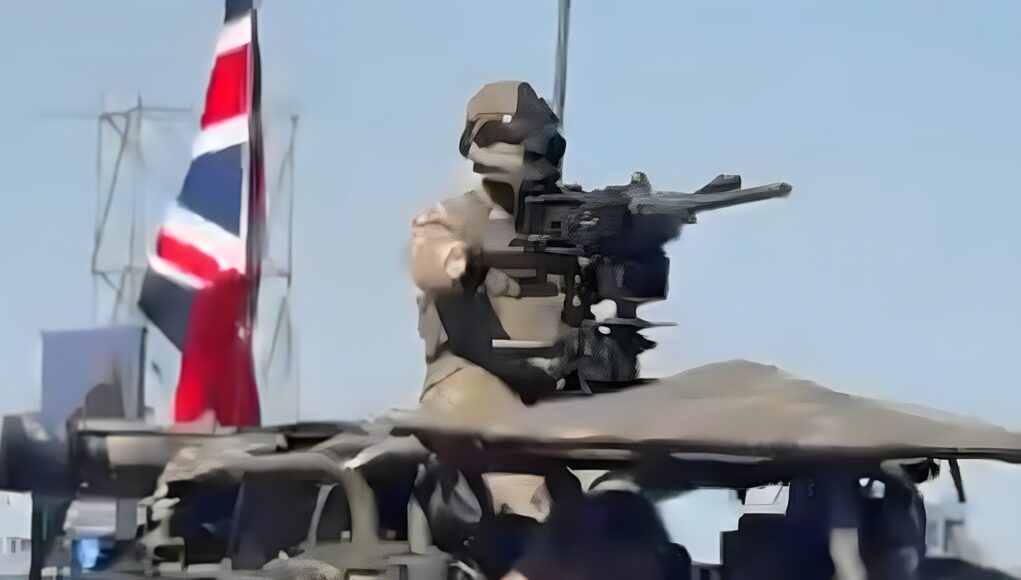


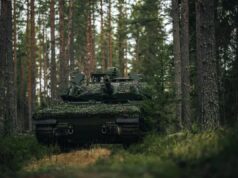
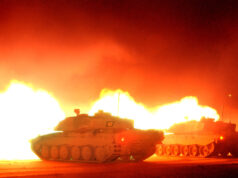
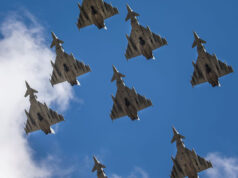
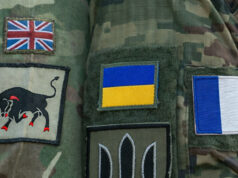


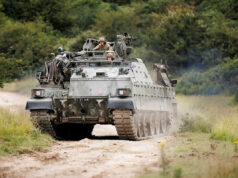


Positive stuff but a long way from the three armoured and one Infantry divisions of the late 80s BOAR
And the Russian army is an even longer way off the once massed armies of the Warsaw Pact..
It is very true, everything is contextual, I do think people are getting a we bit over the top when it comes to Russia, it’s very interesting how people tend to be influenced by previous impressions..even though Russia is essentially a bit backwards and has armed forces that could not overcome a very poor nation with a GDP of 190 billion, a population of 37 million, no navy to speak of or modern airforce. Yet we have mass panic that it can somehow dominate the EU with its is 20 trillion dollar GDP and the UK with 3.6 trillion GDP and a joint population of over 500 million people and some of the most advanced manufacturing in the world and 23% of the worlds wealth and power… when it’s own population is 143 million, GDP is 2.7 billion and it’s industrial base is essentially antiquated. The bizarre part is the same people tend to then dismiss china has a backward nothing nation, when it has a gdp of 19 trillion dollars, a population of 1.4 billion, a tec and industrial base that is advancing all the time as well as over 50% of the worlds ship building industry as well as owning or building 129 port facilities across the globe and numbers wise of total major surface combatants and submarines the biggest navy on the planet, that’s launching a tonnage of warships equivalent to the RN every 2-3 years..it’s also a nation with a serious chip and beef with the western world as well as the last bastion of communism all mixed in with a bizarre fascist level of national exceptionalism…but apparently it’s all ok because they are backwards and have demographics problem….
Agreed, even without US military support, Europe would be able to crush any Russian attack in a conventional war.
Of course, the big question is what happens when the enemies of western democracy unite as they did in WW2, when two nations each obsessed with their own racial superiority (Germany and Japan) made common cause against the West. A Sino-Russian military pact is the nightmare scenario: primarily due to the reach it would give Chinese forces beyond Asia.
Yes, it’s quite dangerous in fact when people keep over rating the Russians because it produces a type of paralysis in western countries which are infinitely more powerful.
European countries have capability to develop and deploy awesome armies…..but sometimes the focus and will isn’t there….Spain….getting France to be a team player….
So you end up with the reliables: Holland, Poland, UK, Norway, Sweden, Denmark and the smaller countries.
Hi SB,
Just recently I have slightly changed my view of France’s attitude. Yes they put up a tough fight for their interests which is fair enough, the real issue is Dassault as witness CEO Trappier’s recent outburst about Belgium wanting to buy F-35 now and be part of FCAS as well…
Want to get on with the French in defence matters say, “oui à la France” and “non à Dassault”..!
Just my take… 🙂
Cheers CR
First, Ukraine isn’t “very poor”. It’s has the 55th highest GDP of around 200 countries, making it significantly above average. Second Russia has taken and is likely to keep 20% of Ukraine! When was the last time any country took 20% of another country and kept it? Much less in Europe, which is supposed to be one of the developed continents. Tibet, perhaps in the 1950s. Next, the West is weak because as much as you like to tot up the numbers, NATO and the West aren’t united or with the same level of singular purpose as Russia. The EU is also ineffectual due to splits.
The main issue isn’t that Russia is big and powerful by itself. The issue is that it’s renormalising warfare and “might is right” geopolitics. When others see that Russia can get away with it, the previous world order breaks apart. The reason China is an issue is that, like Russia and Iran, it wants the absolute right to do whatever it is powerful enough to get away with in its own region. This was the pre-WW2 norm, but returning to it is not in the interests of the majority of countries, including our own. However, if Russia continues to chip away at NATO, trying to break its resolve, we might see a grey-zone, salami slice of the Baltics, which could end up in nuclear war or the end of NATO.
Jon Ukraine is poor..55th GDP for a nation of almost 40million people is not wealthy by any definition, it’s not utterly broke third world level, but it’s second world poor not first world rich. and Russia has ground out 20% over 11 years of war…so what Germany took 100% of a large number of European nations, it still lost in the end had had to give them back. The U.S. and allies took 100% of Afghanistan and ended up giving it all back to the people who they took it from.
As for might makes right being normalised, it’s always been normalised. The U.S. had invaded a large number of nations since 45 and “intervened” in a large number of others..the west beat the USSR by applied aggression across all domains of warfare in the Cold War which was the final expression of might makes right.
The issue is the west sucked in a bizarre belief that it had “won” history, as encapsulates by the end of history and the last man..
And yes I specifically stated a number of times that the danger is Russia undertaking political warfare in the Baltics.. but the danger is that political warfare and sub kinetic attack.. to counter that the west needs to grow some balls and cohesiveness.. adding 200,000 more troops to the over 1 million will do sweet FA to change that fact… the big kinetic danger is china, because china is essentially Russias backer.
1(Br)Corps task, forward deployed in North Germany effectively from 1945, was, first and foremost, to deter.
Putin has now been engaged in a hot war in Europe for over ten years. The Russian economy is on a war footing. Probably, if he stops, he’s dead, one way or another. He had thyroid cancer. He is unlikely to live much beyond 2030. He has nothing to lose.
The Baltic States, Poland are all busily fortifying their borders with obstacle belts. If Russia’s neighbours take the view that Putin will not be deterred from triggering Article 5 by a few Supacats, given that they are our NATO allies, then so should we.
And if Putin does trigger Article 5, NATO will ask Britain for an Army Corps, to which at the moment we can only make Marechal Gamelin’s response to Churchill in 1940:
‘Aucune!’
Monro, Britain leads – and supplies the framework for an army corps, NATO’s ACE Rapid Reaction Corps (ARRC) formed by NATO on 1st Oct 1992. We are the framework nation and as such supply the commander and most of the HQ staff, 1st Signals Brigade, 7th Air Defence Group, 8th Engineer Brigade, 104 Theatre Sustainment Brigade. ARRC HQ is based in Imjin Barracks, Innsworth, Gloucestershire.
22 out of 32 nations in NATO contribute combat formations & units and personnel to ARRC, including the UK which assigns both 1st and 3rd Divisions.
Britain has not of course had its own totally national Corps since 1 (BR) Corps was disestablished also on 1st Oct 92, as part of the reconfiguring of the army following the end of the Cold War and its loss of 40,000 regular personnel and tens of thousands of TA personnel. In fact this Corps was the basis for the ARRC.
This is what it says on the tin, what our allies are expecting:
SDR 2025
The Army is in transition from the force required for the interventions of the post-Cold War era to a force ready to play its part in NATO’s ‘deterrence by denial’, requiring greater lethality, mass, and endurance.
The purpose of the British Army, in support of the roles for UK Defence set out in Chapter 3:
This new model should underpin the transformation of the two divisions and Corps Headquarters committed to NATO’s Strategic Reserves Corps’
Role 2: Deter and defend in the Euro-Atlantic: providing one of two Strategic Reserve Corps to NATO, in line with NATO’s Regional Plans, ready to deploy rapidly from the UK to anywhere in the Euro-Atlantic area. The Army must also sustain its contribution to NATO’s forward presence in Estonia and Poland.
Consideration should be given to pre-positioning ammunition and heavier equipment in appropriately dispersed storage facilities in Europe, supporting NATO readiness and reducing the demand for strategic movement.’
Committing two divisions and a Corps HQ is not the same as committing the full Corps though.
The Army Corps started off in life as a creation of Napoleon.
It is, these days, generally considered to comprise 2-5 divisions. But you are correct. 1(Br)Corps had four divisions.
If we wish to deter Putin, we should reconstitute 1(Br)Corps and
reposition it on the continent.
But we will not and that lack of resolve, lack of vision will end up costing us a great deal more in treasure and, potentially, in blood as well.
As for the expense, if we can fund the absurdity of ‘net zero’, then we can certainly afford to reconstitute a verifiably credible conventional deterrent on the Continent of Europe.
Ask Ukraine. They want a British Field Army back in Europe and, preferably, in Ukraine.
Reconstituting 1 Br Corps is never going to happen. And doubly so not going to reposition an entire corps back on the continent. It’s not lack of resolve or vision, it’s that the investment needed to create a unilateral corps is just beyond us at present. Even a modest uplift in personnel to enable both divisions to be fully usable and get some corps enablers into the mix is a big ask (and even in the 90’s ARRC assumed multiple foreign divisions).
Not sure what Net Zero has to do with anything, and I’m not a fan of consipracy theories randomly being thrown into a conversation and expecting my tacit agreement: So my two cents: Net Zero is important, climate change is real, and if you happen to travel to a few conflict zones and see how many people are being displaced by climate change you might agree that limiting the impact of it has a bearing on national security and global stability. If we just let it go, as you say, it will cost us a great deal more in treasure to mitigate the effects.
Of course climate change is real. The climate has always changed. There is no evidence that Britain’s CO2 emissions have anything to do with climate change.
We do know that 1(Br)Corps contributed to ‘The Long Peace’ in Europe 1945- 2014.
We know what to do. We have done it before. It works.
It will take a sea change in the politics of this country. Given the current popularity of the major political parties, that may very well be on the cards. Without it, as I have previously said, we risk a breach of NATO Article 5 by Russia within the next fifty years and consequent all out war in Western Europe or capitulation.
Oh give us a break. Climate has never changed this quickly and the link between current climate change and anthropogenic emissions has been long established. (Trump and Oil barons trying to ignore it with stupid phrases like “the climate has always changed” not withstanding).
You’re not going to see a purely British Corps any time soon, even if there is a sea change. Sorry. But if you think that you’re delusions about the affordability of having 4 divisions is even more at odds with reality than your climate beliefs.
You offer no evidence.
Go and read the Department of Energy report and come back with some sensible evidenced arguments.
The idea that Britain cannot afford four divisions is just plain silly.
‘A Critical Review of Impacts of Greenhouse Gas Emissions on the U.S. Climate’
Climate Working Group, United States Department of Energy, July 23, 2025
Climate change projections require scenarios of future emissions. There is evidence that
scenarios widely-used in the impacts literature have overstated observed and likely future emission trends.
The world’s several dozen global climate models offer little guidance on how much the climate
responds to elevated CO2, with the average surface warming under a doubling of the CO2 concentration ranging from 1.8°C to 5.7°C. Data-driven methods yield a lower and narrower range.
Global climate models generally run “hot” in their description of the climate of the past few decades
− too much warming at the surface and too much amplification of warming in the lower- and midtroposphere. The combination of overly sensitive models and implausible extreme
scenarios for future emissions yields exaggerated projections of future warming.
Most extreme weather events in the U.S. do not show long-term trends. Claims of increased frequency
or intensity of hurricanes, tornadoes, floods, and droughts are not supported by U.S. historical data. Additionally, forest management practices are often overlooked in assessing changes in wildfire
activity. Global sea level has risen approximately 8 inches since 1900, but there are significant
regional variations driven primarily by local land subsidence; U.S. tide gauge measurements in aggregate show no obvious acceleration in sea level rise beyond the historical average rate.
Attribution of climate change or extreme weather events to human CO2 emissions is challenged by
natural climate variability, data limitations, and inherent model deficiencies. Moreover, solar
activity’s contribution to the late 20th century warming might be underestimated.
Both models and experience suggest that CO2-induced warming might be less damaging economically
than commonly believed, and excessively aggressive mitigation policies could prove more detrimental than beneficial. Social Cost of Carbon estimates, which attempt to quantify the
economic damage of CO2 emissions, are highly sensitive to their underlying assumptions and so provide limited independent information.
U.S. policy actions are expected to have undetectably small direct impacts on the global climate……
From the US Department of Energy that has been instructed by Trump to find that there is no climate change. Yeah thanks but no thanks.
Trump will say anything that gives his oil buddies licensce to print money.
The usual clanging of a mind’s iron doors closing. The authors are highly respected eminent and distinguished scientists and have minds of their own. The net zero nonsense is over. Britain is one of the few major economies paying any attention to it any longer. Our enemies are certainly not. That puts us in grave danger as a nation.
The authors:
Judith Curry, Ph.D. is Professor Emerita at the Georgia Institute of Technology, where she served as Chair of Earth and Atmospheric Sciences for 13 years.
John Christy, Ph.D. is the Distinguished Professor of Atmospheric and Earth Sciences and Alabama’s State Climatologist at the University of Alabama in Huntsville.
The Honorable Steven E. Koonin, Ph.D. is the Edward Teller Senior Fellow at Stanford’s Hoover Institution. He has served as a member of the National Academy of Sciences and the JASON group of government advisors, as well as a Governor of Lawrence Livermore National Laboratory.
Ross McKitrick, Ph.D., is a Professor of Environmental Economics at the University of Guelph in Ontario, Canada.
Roy W. Spencer, Ph.D., is a Principal Research Scientist at the University of Alabama in Huntsville. He holds a BS is Atmospheric and Oceanic Science from the University of Michigan, and MS and PhD in Meteorology from the University of Wisconsin.
Conclusion:
‘Since 1900, the average global surface temperature anomaly warmed 1.3°C, about as much as the IPCC predicts will occur in the next century under a moderate
emissions scenario. But even as the globe warmed and the population quintupled, humanity prospered as never before. For example, global average lifespan went from thirty-two years to seventy-two years, economic activity per capita grew by a factor of seven, and the death rate from extreme weather events plummeted by a factor of fifty.
Climate change damage projections typically refer to reductions in how much life will improve for humanity, they don’t state that it will get worse in an absolute sense (O’Neill 2023).
For most economic sectors, the impact of climate change will be small relative to the impacts of other drivers.
Changes in population, age, income, technology, relative prices, lifestyle, regulation, governance, and many other aspects of socioeconomic development will have an impact on the supply and demand of economic goods and services that is large relative to the impact of climate change.’
Oops! Gamelin was only a General. Unfathomably (not) the French Government failed to promote him.
I do think time for appeasement /non escalation has ended, and we should be deploying as large a force as we can on the nato border and so should the rest of NATO. Time to tell Putin that another crimea isn’t going to happen and if it does it will be met with force. Whilst Russia is a shadow of it’s pre Ukraine war strength, it would be very nieve to think if that war ends that Putin won’t try something else to test nato when he thinks nato countries are otherwise focused, like he did with crimea.
NATO had 2 chances to stop Ukraine war, the initial crimea invasion/little green men and then the build up of troops on the border. Let’s not make it a third mistake.
I think that will happen.
And I think Russia will immediately go nuclear. If they have a neutron bomb or something like it, they will use it.
I don’t think they will hesitate. They can basically afford to lose their top 10 cities and rebuild elsewhere. They don’t care about people and bombing them to the 1800s would just restart a population boom there where they decide to restart from.
This is why people are worried by Russia. They have nukes aren’t afraid to use them like we are and have enough space to start again after a limited exchange….we don’t.
They won’t go nuclear as it would be a deterance. NATO had massive forces on the border during the cold war and it didn’t end up nuclear. We have to stop appeasing Putin.
Britain went to war when Germany invaded Poland.
Good to see a presence. Though I think the Union flag is very far right ( sarc ) and should be reported to the RMP.
RMP notified!
“Don’t confuse your rank with my authority!”
A small gesture but it will be noticed in Moscow. It’s important to keep up the diplomatic pressure on Putin. Healey’s visit to Odesa and the UK declaration that we will contribute ‘reassurance’ forces to Ukraine ports is clever and important move in the chess game. It sends a clear signal to Putin that following any deal if Putin tries to creep into Odesa he will meet UK resistance; he knows that we know he has no intention of stopping at the Donbas.
Paul, in recent weeks it has been stated that the British reassurance force will actually be logisiticians and trainers, probably because we would find it hard to roule a significant force incorporating armoured infantry/mech infantry.
Words like ‘logisiticians’ don’t really land here in UKDJ.
JJ, are you quibbling about a typo? Hopefully not. To some, logistics is dull but very essential of course.
My key point is of course that we cannot roule a sizable (Brigade Group or more) Task Force centred on AI/Mech Inf units over an extended period of time. The Peace Support Operations mounted in FRY, in the face of well armed, ruthless and determined belligerents (many of them guilty of war atrocities), in the 90s, centred on AI in Warriors.
Hi Graham, I’ve discussed this with others here before. We really need to focus on what force level we can actually sustain with rotations, rather than what we can throw in as an “initial punch.”
As you say, we can’t commit an armoured brigade to any enduring operation. I’ve argued before that we need to get back to at least three fully-fledged armoured brigades. Even that wouldn’t be sustainable, but it would at least buy us time.
JJ, Sorry for long delay. We could roule an infantry brigade group (probably light role only) of 6 – 7,000 only if we had recourse to the Reserve Forces and/or the RM.
Down a level…
No great issue rouling a single BG of about 1,000 – but might be a challenge to send one to Ukraine in addition to the one in Estonia and some reservists might be needed.
Morning Graham, we are good at logistics and that skill would be very relevant. Odesa is Ukraine’s lifeline for the grain exports which the world needs and are key to its economy. We have donated some refurbed Sandown class mine hunter vessels and trained their crews – a contribution to assuring Black Sea routes. I also wonder how much UK involvement there has been on the QT in Ukraine’s success using unmanned vessels to deal with Russia’s Black Sea fleet. As you say we would find it difficult to roule a significant armoured force. That said we can be proud of lead we have taken in training Ukrainian soldiers and donating old but still useful vehicles.
Paul, I agree. As a REME officer I worked very closely with ‘loggies’. In fact for two of the workshops I commanded I had RLC personnel under command, who supplied our guys with high value spares.
My last serious job in the army was as COS Camp Bastion (Nov 08-May 09) – then the army mostly had little trouble fielding an infantry-centric Helmand Task Force (Brigade Group) for each roule but did have to be helped by the fielding of 3 Cdo Bde on occasion.
However I recall the initial controversy over the decision to deploy 52 Inf Brigade in 07/08 as they had no combat experience and were light-roled/light-equipped – some said it was scraping the barrel to use a brigade that semed unsuitable and had a regional brigade history rather than an expeditionary history, however they did very well on tour.
My sadness is that the regular army is now too small to deploy an AI/Mech Inf brigade group for an enduring operation.
The issue i have is that the 3 Regiments that use this vehicle in the Light Cavalry role used to operate CVRT Scimitar, supported by other CVRT variants.
As useful in CI, SF, and off road Jackal may be, surely it isn’t suited to the European theatre for use by once Formation Recc Regiments?
Seems a backwards step by the RAC.
What equivalents do other ENATO armies have in the light recc role?
It always seemed to me to be a great vehicle for airmobile forces being deployed to say Africa. As for is it good for Europe, I remember a conversation with an old recce guy and he was very much of the fast small and armed with a machine gun brigade…. He felt anything else was wasted on recce and just encouraged recce units to start fights they were not there for.
Plenty of history in the 20c ( especially WW2 ) of armies downgrading their cavalry and recce units.. the Germans famously ditched the Puma as over aggressive crews started taking on tanks and the British army started removing the turrets from their armoured reconnaissance vehicles, the Inns of Court used a Sawn Off Daimler without a turret and taking the turrets of Stuart tanks was common ish in the field.
Also claiming that Jackal replaced CVRT in role is a bit disengenious. The three Formation Recce regiments ceased supporting armoured brigades, and instead went to supporting light infantry and light mechanised brigades. Jackal has never been intended to take up the CVRT role in the more assertive screening job that Formation Recce does in the face of enemy armour. It’s a lighter Recce screen supporting a lighter brigade.
So yeah, while TECHNICALLY the Regiments where once Formation Recce regiments, the fact they aren’t is an artifact of the downsizing of the Army and 1 UK Division taking over the job of 2, 4 and 5 Divisions, rather than “We’re expecting Jackal to do CVRT jobs.”
😂
?
Hi Dern, your guess is as good as mine… I was a “couple of shandies” deep at the time.
Fair enough XD
Morning Dern.
But that is why I stated “they used to operate” and did not say “they replaced.”
And for me, the downsizing of the Army which has resulted in 1 Div now being lighter as you say justifies the point I was trying to make.
They are using what they have, as that is all we have, not necessarily what is appropriate?
Now, having said that, I’m happy to await you, Graham, or another Army guy add detail and correct me on the intricacies of recc and how this vehicle would be as suited as CVRT was.
Both light, both agile, at least CVRT had some all round Armour. Optics and ISTAR I’ve no idea?
You mentioned 1 Division took over 2 4,5 Divisions role. I only really recall 2 in the Cold War as a primarily TA reinforcement Division, and 4 and 5 in the 90s and 2000s as “Regenerative” Divisions.
Which is why I asked about any equivalents so I could compare to get better info, if other NATO armies are using their light forces in this way, beyond Africa, Middle East type scenarios.
Back in BAOR, they’d be using 1 Corps Armoured Recc elements for this I assume, not Fox or Ferret scout cars brought in from the then 1 Infantry Brigade ( AMF(L) and for deployment on NATO flanks as a light role unit. An example I can think of from the then Cold War British Army.
Plenty do yes. The Germans don’t go in for Formation Recce at all, all their reconnaissance units are equipped with Fennek which is, if anything, even more lightly armed than Jackal, with just a 7.62. Portugal and France both use VBL’s for Recce Regiments in lighter forces, the VBL again is a small light recce vehicle, typically armed with a 7.62 or 12.7mm MG. Italy, and Spain use light Recce vehicles (VBL Puma and VAMTAC respectively) though in sub unit recce companies, not their own Units. Belgium uses a single mixed Heavy/Light Recce Regiment of Piranha V’s and JLTV’s, but also only has a single, slightly bloated Brigade.
Poland uses BRDM in almsot all it’s Brigade Recce Units, which is going to be replaced by Bobr, and in the Long Range Recce units by LPU. Bobr is better protected than Jackal but both still fall into the “Light Recce with only a machine gun” category.
Even the US used to use Humvee’s in light Recce units (now I think to be replaced by JLTV).
During the Cold War the British Army was basically in two halves, 1 Corps, which was all the heavy stuff, and the rest of the Army that sat under UKLF, two Mobile Infantry Brigades (From which AMFL would have been formed and from which 5th Infantry and the Army parts of 3 Cmdo where formed in 1982) and 13 Infantry Brigades (Not including 2 UK Div) which where to do Home Defence and eventually with longer lead than 2 Div reinforce the BAOR. These where typically 1-2 Regular Army Battalions a handful of TA Infantry Battalions and maybe a Yeomanry Regiment on Ferret or Landrover.
When the BAOR disbanded UKLF was reorganised into “Regional Divisions” 4 Divisional HQ’s (2, 4, 5 and Scotland) which split the 13 UKLF and 2 TA 2 Div Brigades between them) (24 Airmobile went to 4 Div but was considered to in line with 1 and 3 Division). By the 2000’s Scotland had been amalgamated into 2 Div and the total number of Brigades had been reduced to 12 (plus 6 Armoured Brigades in 1 and 3 Div and 16 AA). By 2010 the Regional Divisions where relabelled Regenerative Divisions, then in 2012 they where disbanded and the now 10 Regional Brigades went to Support Command (51 and 52 merged, London Brigade became London District). Then in 2015 Support Command merged with 1 UK division, and 3 Mechanised Brigades + 10 Regional Brigades became 7 Infantry Brigades + Regional HQ’s for the Adaptable Force.
Thanks for that.
Was aware of the orbat details, of course, especially the latter period up to the 2010s, but didn’t recall the post Cold War set up.
Interesting with the varied comparisons of other types used.
Fennek. On looking, I was immediately reminded of Panther in its appearance.
At least it has all round armour. Though, I also recall reading that IF the British Army wanted a covered Jackal II, such was available easily enough if the need was there.
So I assume that being open topped, despite the vulnerability, is desirable for all round awareness in the Light Cavalry role.
My knowledge is less than Dern as I left the army in 2009 and he is still in the mob. I am best at the history side of things!
I don’t think you can compare Jackal with CVR(T) Scimitar (and Scorpion back in the day). The CVR(T) range was designed in the 60s for the ‘heavy metal’ part of the army (as Dern says) ie 1 (BR) Corps, the field army part of BAOR. The threat required it to provide all-round protection to the crew from SA fire and near-miss artillery and mortar fire and have some (hopefully enough) protection against AT mines (this aspect improved with the Mk2). With a bit of luck RPG rounds might glance off if fired from too far! The threat was the highly mechanised, highly armoured Warsaw Pact on the offensive, moving quickly with substantial artillery assets. We were to conduct a mobile defence in essence. Recce by stealth was the doctrine, so a small, nimble vehicle with low signature was required. Scimitar had to have very low Nominal Ground Pressure to prevent boggin in and allow it to traverse light bridges etc and on OOA to cover ground of low-load bearing ability (peaty/swampy ground). Narrow width to supposedly move between trees on a rubber plantation in the Far East (mabe an urban myth!). Lightweight to enable underslinging by helo. Needed a CRBN suite (full envelope of armour and pressurisation and special door/hatch seals) as WP doctrine used (or could use) CRBN in the Offense. Scimitar very capable of acting as a screen in addition to recce and overwatch and providing flank protection for other forces on the move. The 30mm cannon enabled it to fight its way out of unwanted trouble and to defeat enemy armoured recce, APCs and soft-skinned vehicles if required.
Jackal on the other hand was not developed for such an environment and against such an opponent. It was procured to provide the army in Afghanistan with an off-road patrol and fire support vehicle with high mobility, supplementing the Land Rover Wolf WMIK and the Snatch Land Rover which previously fulfilled the role.
The Ministry of Defence, stated that the Jackal “was built to meet the British Army’s specific requirements for an agile, well-armed, light patrol vehicle.” The high levels of off-road mobility enable troops to avoid more conventional routes which may be subject to ambush or enemy reconnaissance. It was a vehicle then for the sandbox wars against lightly armed and rather immobile insurgents.
I find it very odd that Jackal might be considered suitable for high-intensity operations against near-peer opponents mounted in 100% armoured vehicles, and with CRBN capabilities. That is the role of Ajax. Jackal should really be kept for non-NATO operations outside Europe.
Hi Graham.
I’m was of the same opinion, which Is why I suggested it a bit of a backwards step.l on my first post.
But I take Dern’s points on other light equivalents and it’s usefulness anyway.
I’d be interested in hearing how the CVRTs are doing in Ukraine. Although they were designed for a more mobile theatre of operations and regarded as obsolete by the British Army, I suspect they’re doing far better than anticipated…
I’d imagine that they’re sat in reserve waiting to be utilised during a breakthrough, especially as the weather starts to worsen and heavier vehicles struggle on soft ground. In typical day-to-day fighting, I know I’d rather be in almost anything else with the constant threat of artillery.
I know I’d rather be in this rather than a metallic box with limited egress with the constant threat of air strike.
By all accounts they’ve done fairly well, but not spectacularly. They’re available in small numbers and the Ukranians have been given many more Spartans, Samaritans and Sultans than Scimitars, so they’re combat use is minimal. But Spartan seems to have been popular due to it’s speed and light foot print for moving troops about. I know they where used in Bakmut, and during the battles on the approach to Pokrovsk. Oryx lists 26 visually confirmed Spartans destroyed, 2 Sultans and (unrelated) 4 FV432s.
My thoughts are in a possible war with Russia, who would probably start lobbing chemical weapons about, the open cab arrangement will be a pig to clean.
As a fellow NATO ally, Germany is currently using the Fennek as its main armoured reconnaissance vehicle, they also use stripped down Mercedes G wagons, in a similar role as the Landrover WIMK and Jackel. They have been saying that the Boxer and Puma IFV will do some of the heavier recce roles. However, the German Army has just kicked off an order for 250 new generation reconnaissance vehicles, to start coming into service by 2028. These will be armed with a remotely operated turret mounting at least a 25mm autocannon. Contenders are the Fuchs, Patria’s 6×6 CAVS, Pandur 2 and the Super AV (all wheeled vehicles). Both the Pandur and Super AV are at least of a similar or bigger size than Boxer. With the Fuchs and Patria 6×6 being slightly bigger than the current Fennek. So it seems Germany is also going down the more protected vehicle route as we are with Ajax.
Thanks Davey.
“British armoured vehicles”
Is Jackal classified as an AFV now? I know they are IED/Mine resistant, but that description seems a bit optimistic.
Technically they are armoured. The actual Vehicle is I think STANAG lvl 1 or 2 (I think it’s 1 but couldn’t swear to it). If you ever work on them you can tell just by how heavy the doors are.
Dont forget that polish airforce pilots helped Britian defeat Hitler and his associates during WWII
The insouciance of Western European politicians is baffling. Casualty figures in Ukraine are similar to those of the Normandy and Berlin campaigns combined. The drone attacks on Ukrainian cities are uncannily similar to the V weapons deployed against Britain in 1944.
There is a European war in progress, ongoing for the last eleven years. The Russian economy is on a war footing. Putin will not stop. If he wins in Ukraine, he will recover and go again, emboldened, NATO article 5 held in contempt.
It is long since time to get real. If we do not have a credible field army, no-one else in Europe will have one either, as we can plainly see, with the exception of Poland.
Given the present uncertainty of European politics, by no means unusual, it may be worth recalling that Poland fought with Russia in the Battle of Berlin.